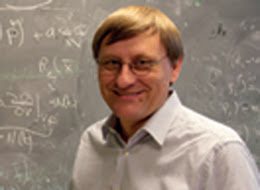Models of living tissues, incompressible limit and free boundary

Keywords
Computational Medicine for the Cardiocirculatory System
Speaker:
Benoit Perthame
Affiliation:
Laboratoire J.-L. Lions, Université Pierre et Marie Curie, Paris
When:
Thursday 28th September 2017
Time:
11:15:00
Where:
Aula Consiglio VII Piano, Edificio 14, Dipartimento di Matematica POLITECNICO DI MILANO
Abstract:
Tissue growth, as in solid tumors, can be described at a number of different scales from the individual cell to the organ. For a large number of cells, the 'fluid mechanical' approach has been advocated recently by many authors in mathematics, physics and biomecanics. Several levels of mathematical descriptions are commonly used, including elastic or visco-elastic effects, nutrients, active movement, surrounding tissue, vasculature remodeling and several other features.
We will focus on the links between two types of mathematical models. The `compressible' description is at he cell population density level and a more macroscopic, description is based on a free boundary problem close to the classical Hele-Shaw equation. Asymptotic analysis is a tool to derive these Hele-Shaw free boundary problems from cell density systems in the stiff pressure limit. This modeling also opens other questions as circumstances in which instabilities develop and questions on the regularity of the interface between heathy and cancerous tissues.
This presentation follows collaborations with F. Quiros and J.-L. Vazquez (Universidad Autonoma Madrid), M. Tang (SJTU), N. Vauchelet (LJLL), A. Mellet (College Park), A. Lorz (LJLL) and T. Lorenzi (St Andrews).
This seminar is organized within the Research project MFAG 17412 «Mathematical insights of glioblastoma growth: a mechano-biology approach for patientspecific clinical tools» funded by the Italian Association for Cancer Research (AIRC), Project coordinator Prof. Pasquale Ciarletta
contact: pasquale.ciarletta@polimi.it
Note:
Leading mathematician Benoît Perthame is a key personality in the international scientific community. A specialist in kinetic equations, he has been a pioneer in the field of "bio maths" since the 2000s. His mathematical modelling of Darwin's theory of evolution, his studies on cancer or the organisation of cellular communities all demonstrate his capacity to invent new concepts and develop analysis tools applied to the life sciences.
